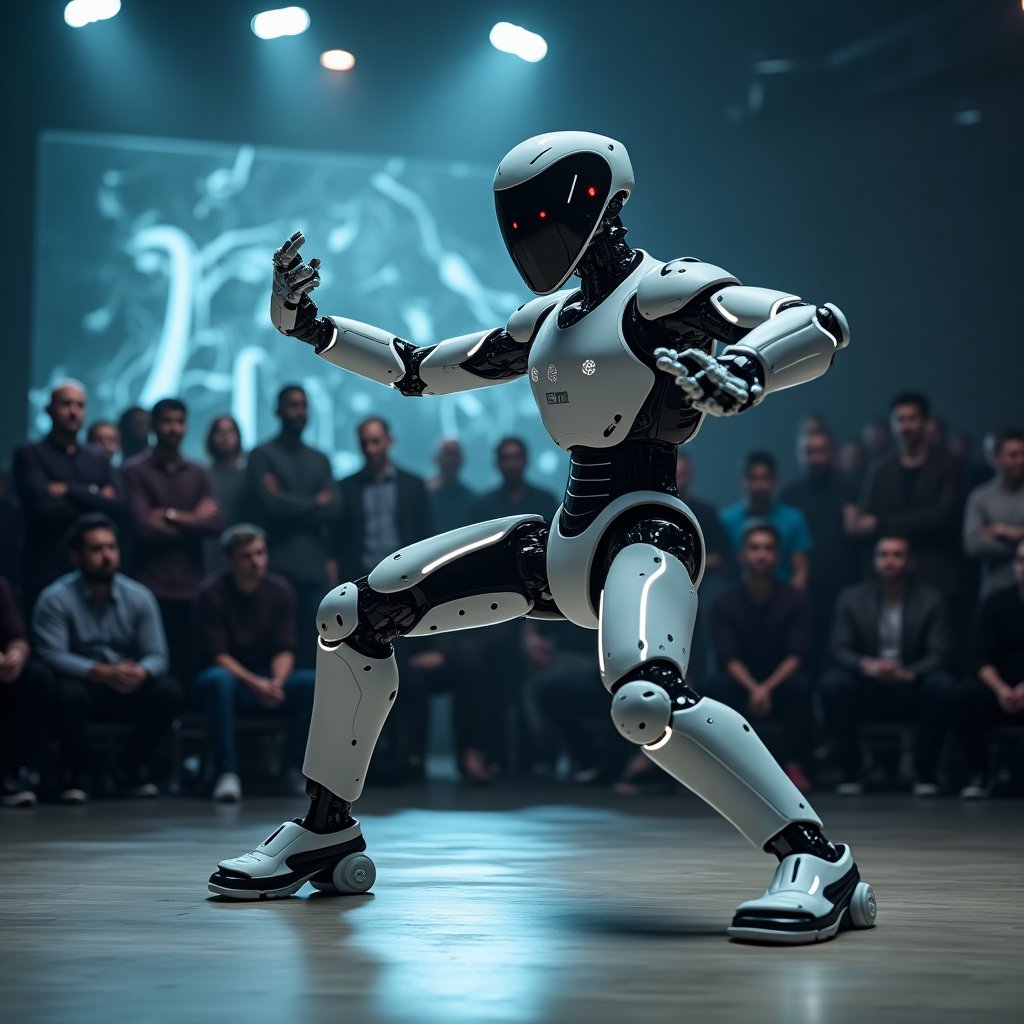The G1 Humanoid: A Machine That Moves Like a Human
In the latest footage from AI Revolution, the G1 humanoid robot demonstrates an astonishing level of agility. It walks, jogs, and navigates uneven terrain with a fluidity that feels almost… human. The robot’s gait is smooth, its foot placement precise, and its ability to recover from near-stumbles is nothing short of miraculous. One moment, it’s descending a step, and the next, it’s correcting itself so quickly that you’d swear it has a mind of its own.
What’s even more impressive is how frequently UniTree rolls out updates. Almost every month, the G1 gets better, faster, and more capable. From cooking and smashing nuts to welding and hammering, this robot can handle tasks that would leave most humans exhausted. And let’s not forget its Kung Fu moves—because who doesn’t want a robot that can kick butt?
POS Mesh: The Secret Sauce Behind Robot Coordination
UniTree isn’t just stopping at individual robots. They’ve teamed up with AI Network to incorporate a system called POS Mesh, a collaborative spatial computing protocol. This system allows multiple robots to exchange spatial data, enabling them to coordinate movements and operate more efficiently in the same environment. Imagine a fleet of G1 humanoids or GoTo W9 quadrupeds working together, sharing maps in real-time, and tackling tasks in parallel. It’s like a robot orchestra, with each machine playing its part to perfection.
POS Mesh reduces redundancy, ensures all robots use the same frame of reference, and optimizes resources. Deployment happens in seconds, without the need for tricky manual setups. This lays the groundwork for scalable and efficient autonomous systems, paving the way for robots to handle complex tasks more intelligently.
Eliza Wakes Up: The Most Advanced Humanoid Robot Yet
If the G1 wasn’t impressive enough, UniTree is also working on a project called Eliza Wakes Up, which aims to create one of the most advanced humanoid robots ever released outside a research lab. Starting with the UniTree H1—a sophisticated bipedal platform—the project goes much further by upgrading everything from the robot’s face to its hands.
Eliza Wakes Up features an animatronic silicone face with a broad range of expressions, designed to achieve a high level of emotional connection. The robot’s hands are equipped with advanced dexterity, allowing it to handle everyday objects with near-human precision. The skin is hyper-realistic, and the combination of an expressive face and fluid movements helps cross the uncanny valley in a way that’s rarely seen.
Specs That Will Blow Your Mind
Here’s a quick rundown of the UniTree H1’s specifications:
- Height: 180 cm
- Weight: 47 kg
- Walking speed: Greater than 1.2 m/s
- Peak torque density: 189 N·m per kg
- Battery capacity: 864W for over 8 hours of operation
- Real-time task performance with responses in under 50 milliseconds
But what truly sets Eliza Wakes Up apart is its brain. The developers have integrated a large language model and Eliza OS V2 by AI6ZDA, creating an AI agent that can think, reason, and interact naturally. This robot isn’t just a machine—it’s a physical embodiment of AI that can flow between digital and tangible worlds. Think of it as Sophia 2.0, but with hardware and software that are light-years ahead.
What Does This Mean for the Future?
The advancements showcased by UniTree and its partners are nothing short of revolutionary. From the G1’s agility to Eliza Wakes Up’s emotional intelligence, these robots are redefining what’s possible in the world of robotics. But with great power comes great responsibility. As these machines become more capable, questions about ethics, regulation, and potential misuse become increasingly important.
For instance, the G1’s ability to weld and hammer suggests an expanding role in industrial settings, potentially improving workplace safety. But what happens if these robots are outfitted with harmful attachments? The agility and intelligence of these machines are captivating, but they also raise concerns about misuse.
Robots That Learn Like Humans
At the University of California, San Diego, researchers are experimenting with the G1 in a project that teaches the robot to waltz by mirroring human moves in real-time. Instead of relying on pre-programmed dance scripts, they use AI models trained on human motion capture data. This approach allows the robot to quickly learn new tasks, from dancing to dodging, without needing to return to the lab for every fresh action.
This capacity for rapid adaptation opens up possibilities for cutting costs and speeding up development. It also means that robots could soon take on roles ranging from deliveries to caregiving. Imagine a personal trainer that never tires or a caregiver that can handle repetitive tasks with ease. The potential is limitless.
Are We Ready for This Transformation?
As we stand on the brink of a robotics revolution, it’s natural to feel a mix of excitement and concern. The G1 and Eliza Wakes Up represent a radical change, merging digital intelligence with tangible machines. But are we ready for this transformation? Or is it moving faster than we can handle?
What do you think about the future of robotics? Are you excited about the possibilities, or do you have concerns about the ethical implications? Share your thoughts in the comments below and join the conversation. And if you’re as fascinated by this topic as we are, don’t forget to become part of the iNthacity community—the "Shining City on the Web." Like, share, and participate in the debate. The future is here, and it’s waiting for your input.
Wait! There's more...check out our gripping short story that continues the journey: The Awakening of Eliza
Disclaimer: This article may contain affiliate links. If you click on these links and make a purchase, we may receive a commission at no additional cost to you. Our recommendations and reviews are always independent and objective, aiming to provide you with the best information and resources.
Get Exclusive Stories, Photos, Art & Offers - Subscribe Today!


























Post Comment
You must be logged in to post a comment.